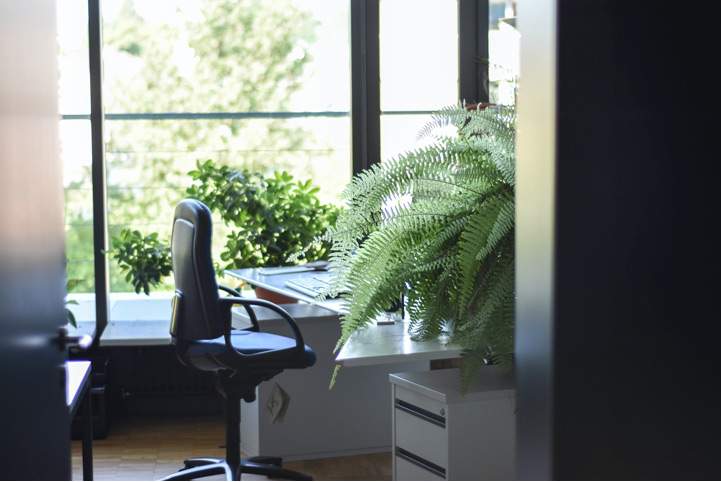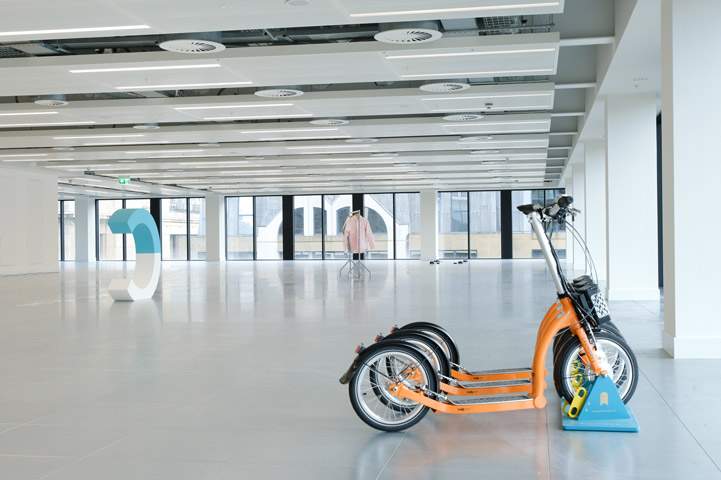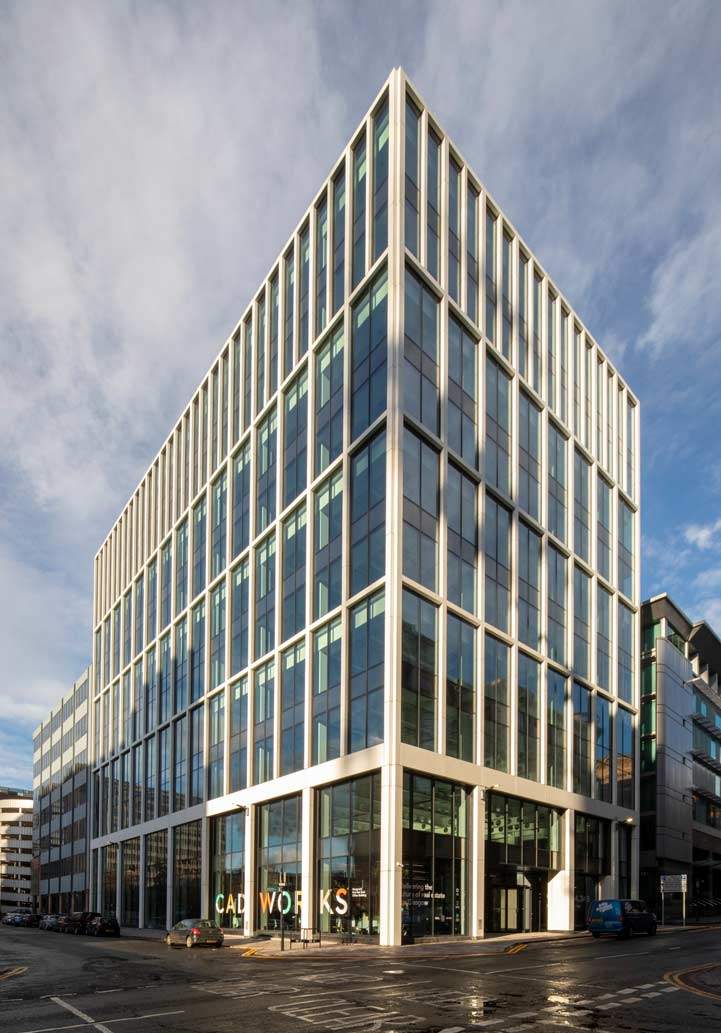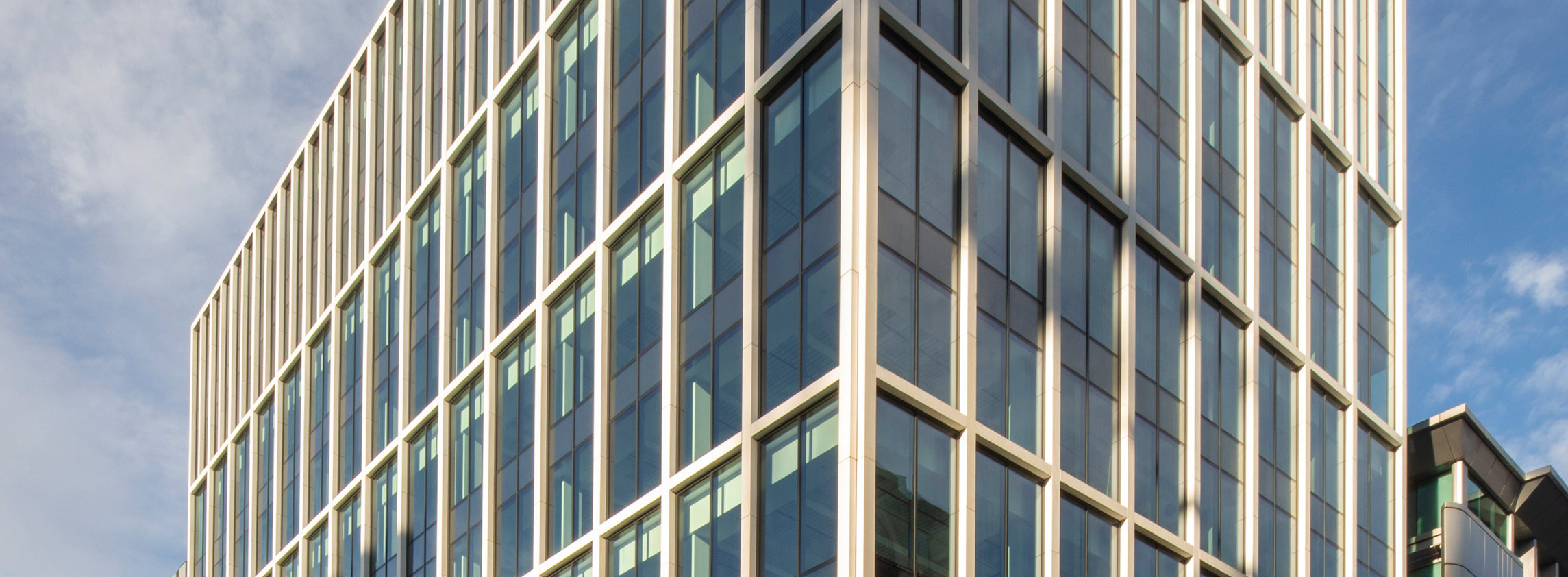Although the property sector faces challenges, it has the potential to provide many solutions
Spotlight on Environmental, Social and Governance (ESG)
So why focus on property? It’s estimated that nearly 40% of global carbon emissions can be attributed to the property industry, split between buildings in operation and new construction. The built environment is very carbon-intensive, primarily due to materials used in construction and the energy required to operate a property through its lifespan.
As a result, major changes to the way the property industry builds, maintains and recycles its assets are inevitable if Scotland is to achieve its net zero status by 2045. Some organisations will meet this target, and others will likely fall short, but this is the trajectory that Scotland is moving towards.
So broadly speaking, if you have a property that is currently energy- and carbon-intensive, it’s in danger of becoming a stranded asset. Eventually you won’t be able to lease or sell it, and this will impact its position in the market – it becomes an untenable property with diminished value.
There is no minimum EPC rating when selling or leasing a building with a floor area over 10,000 sq ft in Scotland
Clare Bailey, Director, Commercial Research
In Scotland, the Climate Change (Scotland) Act 2009 (Section 63) and The Assessment of Energy Performance in Non-Domestic Buildings (Scotland) Regulations 2016 are the relevant pieces of legislation, requiring building owners to improve energy efficiency and reduce carbon emissions across non-domestic/commercial buildings. There is no minimum EPC rating when selling or leasing a building with a floor area over 10,000 sq ft in Scotland (unlike in England and Wales), with the approach instead based on demonstrating equivalence with the 2002 Scottish Building Regulations or later. Section 63 Regulations (of the Climate Change Act) introduced in 2016, is a mechanism that is currently being used to prevent poorly performing buildings being sold or let in Scotland, unless energy improvement measures are undertaken. However, more recently, we are seeing a more societal and reputational push, where it’s the occupiers and the market in general that are demanding more energy-efficient buildings. Alternatively, you can actively reduce emissions from your property, to ensure your property remains viable and on track to achieve net zero emissions by 2045.
So why does it matter? Ignoring the path to net zero is a high-risk strategy. You might already be in danger of becoming stranded, and that’s when there’s a major risk to your asset.
All the work that we do around these trajectories and implementation of measures to reduce carbon and energy is to ensure your asset remain commercially viable in the short and long term.
With businesses seeking to attract and retain the best staff, the building and space they occupy now serve as a key talent magnet
Clare Bailey, Director, Commercial Research
As an industry, we do tend to focus on the kilograms of CO2 that our properties emit and kilowatt-hours of energy that our buildings consume, or what could be termed ‘carbon tunnel vision’. However, there is so much more. The concept of ‘social value’ is used more and more by commercial real estate companies to measure the impact that properties have on local communities and society. Relationships are key. The best and most effective way to make the office an integral part of people’s lives is by designing in connection. Office buildings must become more than simply a space to work – but a place to build connected communities, both within and outside our offices.
With businesses seeking to attract and retain the best staff, the building and space they occupy now serve as a key talent magnet. Occupiers will favour offices that encourage their employees to journey to the city centre. That means they need to offer an experience beyond just the working day. Developers are really starting to take this on board. Adding attractive rooftop or street-level gardens and allotments, event and community spaces, and gallery spaces will help make these buildings destinations, rather than simply workspaces.
From urban grey to urban green
Although there is a huge emphasis on redesigning the office post-Covid - it isn’t all about buildings - the spaces between the places also have an important role to play in creating the best human experience.
This is where private and public can work together to create areas within the city to foster wellbeing and inclusivity, creating safe and accessible spaces such as Princes Street Gardens, one of the most important urban parks situated in the heart of Edinburgh.
However, in order to promote wellbeing, developers and occupiers are now starting to increase the provision of green space in and around their office buildings. A good example is Barclays’ new campus in Tradeston – the bank took a derelict brownfield site in an underinvested area and created a city centre park, delivering space for both employees and the local community.
However, in dense urban environments, where green space is limited, there are techniques that landlords and tenants can use, to enhance the sense of nature within a building. One of these is to adopt and encourage a biophilic design in an office building. In fact, the presence of plants and nature is reported to improve wellness by 15%, productivity by 6%, and creativity by 15%.
Transforming the urban areas can indeed create a better place to live, a more biodiverse rich space and a nicer route to commute along.

Case Study: The return of the retrofit
Newly constructed buildings are, of course, more energy-efficient, given the opportunity to design for net zero emissions at concept stage. However, it’s estimated that around 80% of the buildings that will be standing in 2045 have already been built, so a major priority is decarbonising our existing stock.
Repurposing existing buildings can typically save between 50–70% of the embodied carbon associated with new construction, but retrospective projects can be challenging, costly and require careful coordination with building occupants.
At present, Savills is developing a net zero carbon strategy for Abrdn at Exchange Crescent, a Grade A commercial office originally constructed in the late 1990s and located in Edinburgh.
Abrdn has committed to an ambitious science-based target to achieve a 50% reduction against its 2018 baseline operational emissions by 2025.
On this particular asset, Savills initially undertook a holistic review of the property, benchmarking its placement within the industry and undertaking a granular review of the installed services systems.
Our next step was to create a detailed thermal model, or digital twin, to visualise the future performance of the property against a defined improvement criteria, ultimately to reduce carbon emissions and energy consumption, moving the property closer to a net zero position.
Building on the theoretical analysis, we are now progressing to the implementation stage, whereby the agreed improvement strategy is put in practice with periodic reviews and updates.
All of these measures are designed to help Abrdn achieve compliance with its reduction targets, whilst also ensuring the property aligns with the ESG aspirations of its tenants in occupation.
Refurbishments are set to impact rental growth
Glasgow doesn’t currently have enough available Grade A office supply to meet demand for even one year’s worth of take-up. Therefore, comprehensive refurbishment opportunities are becoming extremely significant within a market that favours a ‘flight to quality’.
Refurbishments are quicker to deliver and often more economical, while also presenting occupiers with an interesting sustainability proposition given the reuse of existing buildings.
When considering some of the viability issues associated with spiralling build costs, refurbishments will play an increasingly vital role. Furthermore, occupiers are prepared to pay higher rents for better space, and with the weight of demand swaying towards ‘best in class’, this could lead to significant rental growth on refurbished stock.
By comparing the current new build Grade A rents against best-in-class refurbished space, Savills found that Glasgow has one of the largest rental gaps at c.15%, compared to c.10% in other Big 6 markets.
With the lack of new builds coming through, coupled with a glut of refurbishments that offer a much higher quality product than ever before, such as Aurora (80,000 sq ft) and 50 Boswell Street (85,000 sq ft), this suggests Glasgow is likely to see one of the biggest jumps in refurbishment rents going forward, with refurbishment rents likely to surpass new builds in 2023. This will have an impact on rebasing the new developments to approximately £40.00 per sq ft that will come through post-2023.
Creating Scotland’s affordable workspace
Scotland’s creative industries comprise over 15,000 businesses employing more than 70,000 people, and together they make an important contribution to the national wealth and international reputation of Scotland. In fact, between 2016 and 2021, the number of small businesses in the city also increased by 49%. Providing affordable and interesting workspaces is therefore crucial to ensuring that Scotland is at the forefront of the tech and creative industries, and a draw for national and international talent. Proactive local authorities that recognise existing resources and create mechanisms to support new, affordable programmes will have a direct impact on the local area and job creation post-pandemic.
As property owners, councils often have unused or under-used assets that can be repurposed as workspace, either for long-term use or as ‘meanwhile’ space awaiting redevelopment. As a result, private developers and the planning authority are being increasingly encouraged to make use of ‘meanwhile’ space prior to development. And there are several advantages to this approach: it’s a great opportunity for providers to test their concept; to deliver a service to the local community, and to brand a site while it is undergoing redevelopment.
.jpg)
Under-used assets can be repurposed as workspaces for the creative sectors
A prime example is EP Spaces, which is Edinburgh Printmakers’ national network of affordable ‘meanwhile’ spaces for artists and creative communities. Edinburgh Printmakers work with landlords across Scotland, bringing disused shops and offices back to life with new purpose and vitality. They have been highly effective in creating vibrant workplaces in the heart of towns and cities that often have limited affordable space for creative projects. The High Street Area Strategy, City Property and Glasgow City Council have also been trialling a Meanwhile Use initiative. Its aim is to show that there are innovative ways to bring vacant units into use and thus re-energise neglected urban areas. In addition, most tenants of ‘meanwhile’ spaces are from the creative communities, so they bring a distinct and welcome character to the neighbourhood. Repurposing older buildings that are already in the right location is a sustainable and cost-effective way to develop affordable workspaces.
The use of historic buildings, which offer some form of heritage and cultural belonging, can help to reinvigorate communities. According to Historic England, links to a place with history can improve a sense of wellbeing; so it follows that creating workspaces in such environments can enhance physical and mental health while connecting people to their community.
Glasgow-based Wasps is Scotland’s largest creative community providing inspiring spaces and places. As an organisation, it offers studio space to around 900 artists, 25 arts charities and 33 creative businesses at 19 historic locations across Scotland, for more than 800 tenants from Shetland to the Borders. Wasps specialises in finding creative, economic and positive community use for heritage buildings which may otherwise be lost.
One of Wasps’ key projects is the redevelopment of half of the Briggait Market Halls complex, where it has created artists’ studios, offices and exhibition space for Glasgow’s arts community. Up to 150 creative people now work at the Briggait daily. The restored 1873 hall also hosts a range of cultural, community and social events and activities throughout the year.
Proactive local governments that make the best use of existing resources and devise practical mechanisms to support new ideas will have a direct impact on the local area, job creation and the environment
Clare Bailey, Director, Commercial Research
It isn’t just key cities that are embracing creative space; we have also seen the trend move out to more rural locations. Creative Academy is a £5.7m flagship project in the Highlands, based in the two B-listed Inverness Royal Academy ‘Midmills’ buildings in the heart of the city. The two-phase Inverness project aims to boost the economy by bringing together artists, makers and creative companies in a high-profile centre with the facilities they need to flourish. The project is already showing its worth by providing high-quality, affordable workspace to locally-based people who want to live and work in the Highlands but were previously unable to find studios.
CABN (Creative Arts Business Network), a Place Partnership project funded by Creative Scotland, is another key example of an initiative to grow and nurture the creative sector. Set in the Scottish Borders, it offers a diverse programme of support that seeks to strengthen the sector by working towards longer-term strategic goals. Ultimately, investment in social and cultural infrastructure through the provision of affordable workspaces will become even more important post-pandemic, with community and collaboration becoming key ingredients.
Proactive local governments that make the best use of existing resources and devise practical mechanisms to support new ideas will have a direct impact on the local area, job creation and the environment. Essentially, an area will see authentic social and economic value by connecting with the community, embracing its heritage, and by nurturing and celebrating local skills, crafts and culture.
Cadworks, Glasgow: ‘Scotland’s most sustainable office building’
Cadworks, Savills venue for their COP26 events back in November 2021, is being billed as ‘Scotland’s most green office building’. Cadworks is not just a building – it is about creating a workplace with high environmental, social and economic sustainability.
Not only is it net zero carbon in use, but it is also one of the first buildings to use an air-purifying paint that ‘eats pollutants and viruses for lunch!’. It promotes health and wellbeing for the tenants and their staff, promoting collaborative spaces and active travel. Cadwork is designed to make working easier and more enjoyable.
The building is WELL Gold ready, which means they incorporate the latest thinking on how a building can help you feel physically and mentally healthier.
The 94,000 sq ft Grade A office building features the city’s first cycle-in access ramp plus extensive facilities for the growing number of Glasgow cyclists, as well as the city’s first private fleet of Swifty Scooters for tenants to use for free.

Swifty Scooters for Cadworks tenants to use
The developers, the FORE Partnership, have not only made an industry-leading pledge for its business and operations to be net zero carbon by 2025, but it is also a certified B Corporation, and is committed to environmental stewardship and social impact, working for the benefit of all stakeholders. It is driven to help Glasgow’s most vulnerable communities through its projects.
Unsurprisingly, Cadworks is the most socially impactful building in Scotland. The FORE Partnership, which developed the building, is equally passionate about improving the wellbeing of the wider community. Cadworks features an ‘urban village hall’ which will host events with occupiers joining local community groups and social enterprises.
The FORE Partnership states it’s more than just bricks and mortar – with its ethos to drive system change and be a catalyst for positive change where it invests, whether by working with grassroots organisations or larger social enterprises that will make an enormous difference to people in the city.
The aim is to create an environmentally sustainable building that thinks about and includes the local community and is sensitive to their needs, as well as an office culture that is inclusive and supports the health and wellbeing of its employees.

Cadworks, Glasgow
